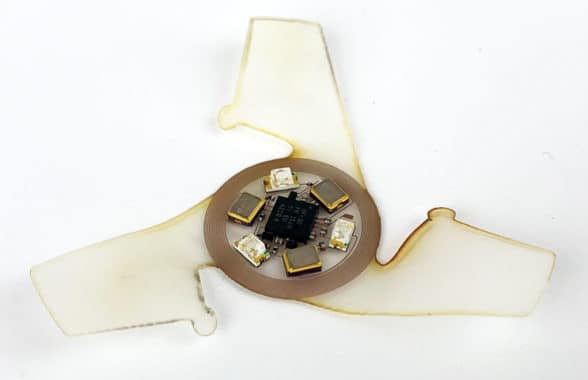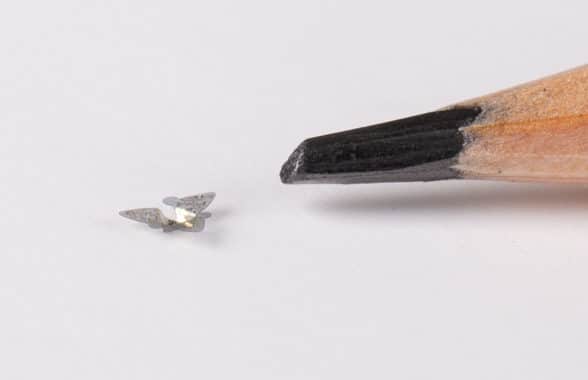
Researchers based at Northwestern University in the US have developed ‘flying microchips’ or microfliers the size of a grain of sand that incorporate micro-sensors and use NFC to harvest ambient energy and transfer data to a smartphone, tablet or computer.
The microfliers are the smallest-ever human-made flying structures and can carry ultra-miniaturised technology including sensors, antennae and memory storage that can be deployed in a wide range of use cases, including the monitoring of air pollution, airborne disease and other environmental data.
The aerodynamic design of the microfliers is based on the structure of natural winged seeds to ensure that, when dropped from an aeroplane or building, they catch flight on the wind, spinning like a helicopter and falling to the ground at a slow velocity and in a controlled manner.
“The microfliers comprise two parts: millimetre-sized electronic functional components and their wings. As the microflier falls through the air, its wings interact with the air to create a slow, stable rotational motion,” the researchers explain.
“The weight of the electronics is distributed low in the centre of the microflier to prevent it from losing control and chaotically tumbling to the ground.
“In demonstrated examples, [the team led by Northwestern’s John A Rogers] included sensors, a power source that can harvest ambient energy, memory storage and an antenna that can wirelessly transfer data to a smartphone, tablet or computer.
“In the lab, Rogers’ group outfitted one device with all of these elements to detect particulates in the air. In another example, they incorporated pH sensors that could be used to monitor water quality and photodetectors to measure sun exposure at different wavelengths.

“Rogers imagines that large numbers of devices could be dropped from a plane or building and broadly dispersed to monitor environmental remediation efforts after a chemical spill or to track levels of air pollution at various altitudes.”
“Most monitoring technologies involve bulk instrumentation designed to collect data locally at a small number of locations across a spatial area of interest,” Rogers says.
“We envision a large multiplicity of miniaturised sensors that can be distributed at a high spatial density over large areas, to form a wireless network.”
A short video explains how the team developed the microflier.
Rogers’ team at Northwestern University unveiled a dissolvable wireless pacemaker powered by NFC in June 2021 and an NFC-powered wearable VR feedback patch in November 2019.
Next: Visit the NFCW Expo to find new suppliers and solutions